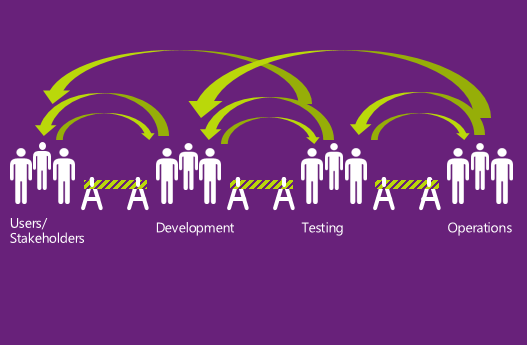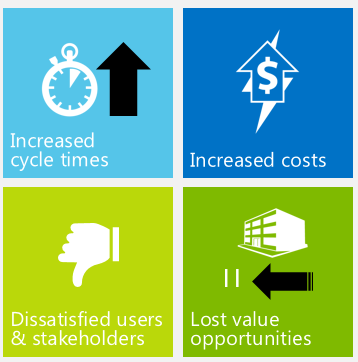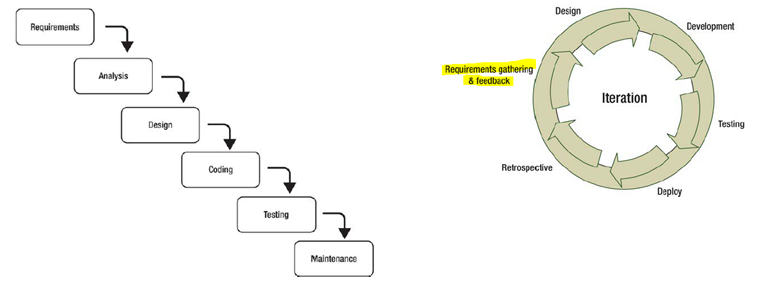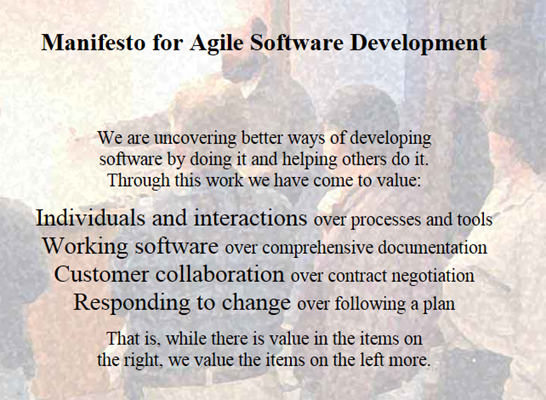Abstract
Agile is a software development methodology which I becoming popular day by day. It defines the mind set of many software development teams working across the globe. This article will walk you through the entire agile-scrum process and how as a developer you can contribute in agile way and deliver value. BTW, agile means ability to move quickly.
Agenda
- Life Cycle of a Developer
- Barriers to value delivery
- Agile Adoption
- Plan Driven Vs. Value Driven
- Agile Manifesto
- Scrum – End-to-End Process
- Agile Estimation
- Scrum Status Board
- Agile Tools
- Conclusion
Life Cycle of a Developer
1st interaction a developer have is with BA, they are responsible to document, track and describe the user requirements. But many times there are gaps in understanding the needs; which causes issue by various means. Image below shows what user wanted and what happened when it is implemented.
Stop the blame game
In many team settings, a developer is considered to be responsible for everything, right from understanding requirements to code to support testing, help in deployment and then resolve production issues. Well, I always believed that entire software development is a team effort. But at the end, in most cases developers bear most of the blame. So its no longer a Developer’s responsibility to own everything rather team owns it.
Team Barriers = Value Delivery Impediments
All .NET Development teams want to deliver value but on realistic grounds what are barriers which stops a team to deliver value.
Every team has dependency within and on people outside, the communication gap and lack of understanding of common goal is the root cause of Value Delivery Impediments.
Impact of Team Barriers
Well, most of the issues any software teams runs into has following outcomes:
Increased Cycle Times – This means that you have to work longer to get work completed.
Increased costs – More time means more money.
Dissatisfied users & Stakeholders – End user missed the milestone of feature being available and so it raises concerns for stakeholders as well.
Lost value opportunities – You are potentially not going to have more work from same client.
Agile Adoption
Agile-Scrum is most widely accepted methodology of Agile development. Term scrum is taken from sport rugby in which whole team works get the possession of the ball.
Plan Driven Vs Value Driven
Plan Driven (waterfall approach) is an old school which defines software development life cycle. Many teams are still doing that though but in waterfall plan takes precedence over value.
Value Driven (agile approach) is new way of building software, it gels teams, stakeholders and user very well and help them team receive early feedback and fail fast.
Manifesto for Agile Development
17+ people gathered in a ski resort and they came up with agile manifesto.
Understanding Type of Backlogs
In agile-scrum there are two type of backlogs
- Product backlog
- Sprint backlog
Product backlog is larger list of work items (in agile world known as User Stories), it is like a “Functional Specification Document” or System Requirement Specification Document or “Business Requirement Document” or whatever your organization likes to call it.
So whatever user requirements we have, all are stored in Product Backlog, backlog.
Sprint Backlog, Sprint is defined time, teams work on to deliver certain items from product backlog. But before teams start working on those items (User Stories), those need to be properly defined.
Scrum – End -to-End Process




 I am a hands-on architect with proven 19+ years of experience in architecting, designing, and developing distributed software solutions for large enterprises. At Microsoft, as a Principal Software Engineering Manager, I own the Platform team. I see software development as a craft, and I am a big proponent of software architecture and clean code discipline-n-practices. I like to see the bigger picture and make a broader impact. I was also a Microsoft MVP for past 7 years on Visual Studio and Dev Technologies I can be reached at vidya_mct@yahoo.com or twitter @dotnetauthor
I am a hands-on architect with proven 19+ years of experience in architecting, designing, and developing distributed software solutions for large enterprises. At Microsoft, as a Principal Software Engineering Manager, I own the Platform team. I see software development as a craft, and I am a big proponent of software architecture and clean code discipline-n-practices. I like to see the bigger picture and make a broader impact. I was also a Microsoft MVP for past 7 years on Visual Studio and Dev Technologies I can be reached at vidya_mct@yahoo.com or twitter @dotnetauthor




Leave a Reply